6.07.2019
Arianespace delays Vega launch to avoid unfavorable high-altitude winds
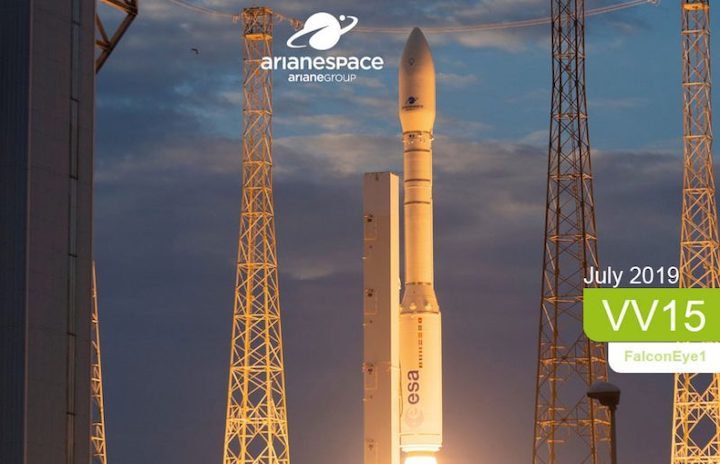
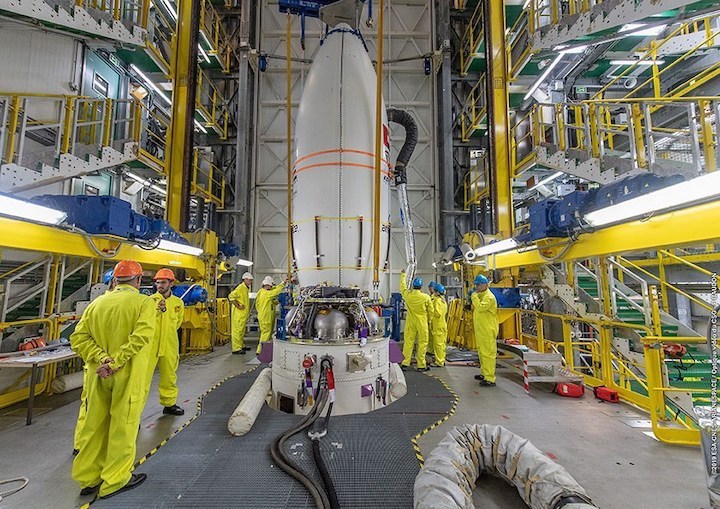
The launch from French Guiana of a solid-fueled Vega rocket with a European-built surveillance satellite for the United Arab Emirates has been delayed 48 hours to Sunday, Arianespace announced Friday, citing unfavorable high-altitude winds over the spaceport.
The fully-assembled rocket was set for liftoff Friday night from French Guiana, but a check of weather conditions showed wind conditions aloft were not favorable for the launch.
Arianespace rescheduled liftoff of the 98-foot-tall (30-meter) launcher for Sunday at 9:53:03 p.m. EDT (0153:03 GMT Monday) with Falcon Eye 1, a military spy satellite for the United Arab Emirates.
Liftoff is set for 10:53 p.m. local time at the Guiana Space Center, a European-run space base on the northeastern coast of South America.
The four-stage Vega rocket will place the Falcon Eye 1 spacecraft in a 379-mile-high (611-kilometer) sun-synchronous orbit flying over Earth’s poles, enabling global imaging coverage during the satellite’s mission.
Falcon Eye 1 is the first of two Falcon Eye reconnaissance satellites ordered by the UAE under an agreement negotiated in 2013. Airbus Defense and Space built the two satellites, and Thales Alenia Space — usually an Airbus competitor — provided the optical imaging payload for each spacecraft under a contract valued at roughly 800 million years, or about $1.1 billion at 2013 exchange rates.
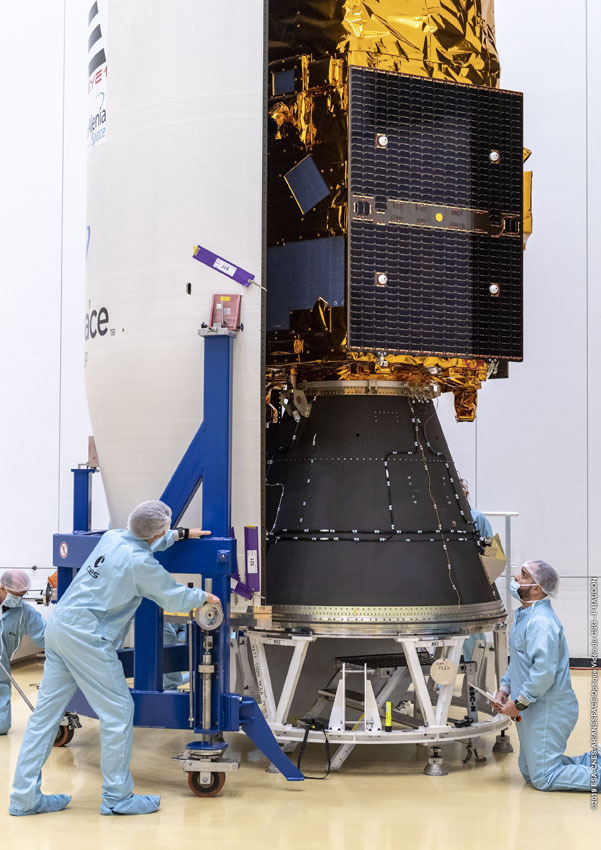
The agreement was brokered with the backing of the French government, but a security review by the U.S. government delayed the final signature of the contract between the UAE, Airbus and Thales until 2014. The satellites use some U.S.-made components, prompting the Obama administration to put a temporary hold on the deal until officials ultimately approved the export of the U.S. parts for use by the UAE military.
The Falcon Eye satellites are based on the French Pleiades Earth-imaging satellites launched in 2011 and 2012.
Falcon Eye 1 weighs 2,638 pounds (1,197 kilograms) fully fueled for launch on the Vega rocket. The identical Falcon Eye 2 spacecraft will launch on another Vega flight later this year.
Sunday’s launch will be the 15th flight of a Vega rocket, developed primarily in Italy by Avio, since its debut in February 2012. It will be the sixth launch by Arianespace this year.
After liftoff from French Guiana, the Vega rocket will head north over the Atlantic Ocean and fire its three solid-fueled booster stages in succession during the first six-and-a-half minutes of the mission. A liquid-fueled upper stage will ignite two times to inject Falcon Eye 1 into its targeted near-circular orbit.
Deployment of the Falcon Eye 1 spacecraft is planned for 57 minutes after liftoff.
Quelle: SN
+++
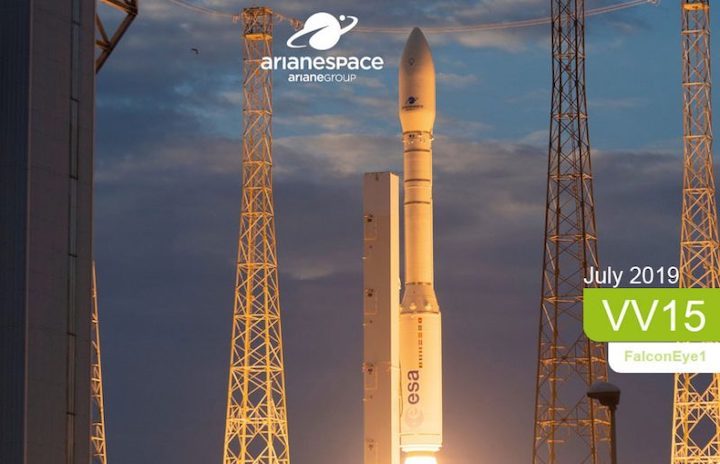
MISSION DESCRIPTION
For its sixth launch of the year, and the 15th Vega mission since this launcher began its career at the Guiana Space Center in 2012, Arianespace will orbit the FalconEye1 satellite.
This Earth observation satellite for the United Arab Emirates was developed by Airbus Defence and Space as prime contractor and Thales Alenia Space as co-prime.
Flight VV15 marks the 12th Earth observation mission for Vega, a versatile light launcher.
- 9:53:03 P.M. (JULY 5)
- WASHINGTON D.C.
- 10:53:03 P.M. (JULY 5)
- KOUROU
- 1:53:03 (JULY 6)
- UTC
- 3:53:03 A.M. (JULY 6)
- PARIS
- 5:53:03 A.M. (JULY 6)
- ABU DHABI
PAYLOAD
- FalconEye1 Satellite
-
The FalconEye satellite is a high performance optical Earth-observation satellite system for the Armed Forces of the United Arab Emirates (UAEAF) manufactured by Airbus Defence and Space as prime contractor and Thales Alenia Space as co-prime.
The overall system is based on two identical satellites, FalconEye1 and FalconEye2, in Sun-synchronous orbit (SSO). Each satellite features an Earth observation payload, with very-high-resolution optical capabilities. It is equipped with a ground system for monitoring, receiving and processing the images.
Upon the system delivery, Emirati engineers will control and operate the spacecraft.
The FalconEye1 satellite, to be orbited by Flight VV15, will be the first space component of the system, and will have a dual use purpose: support the needs of UAE Armed Forces, and provide the commercial market with images.
It will weigh approximately 1,197 kg. at launch and will be raised to a heliosynchronous orbit at 611 kilometers.
FalconEye2 will be launched later this year, also utilizing a Vega vehicle.
As satellite prime contractor, Airbus Defence and Space was in charge of the satellite design, integration and tests, and supplied the platform.
FalconEye1 is the 131th Airbus Defence and Space satellite to be launched by Arianespace. There currently are 20 Airbus Defence and Space satellites in Arianespace’s backlog.
Thales Alenia Space, as co-prime, designed and supplied the Optical Instrument and the image chain. Arianespace had launched 159 satellites for the co-prime of this program, and there are seven additional Thales Alenia Space satellites in Arianespace’s order book.
The FalconEye program relies on a heritage from previous French national satellite programs, such as Pleiades.
Quelle: arianespace
+++
FalconEye1 is readied for launch on Arianespace’s upcoming Vega mission
Preparations are continuing for Arianespace’s second Vega flight in 2019 (and sixth overall this year for its launcher family), which will orbit a high-performance optical Earth observation satellite for the United Arab Emirates on July 5 from the Spaceport in French Guiana.
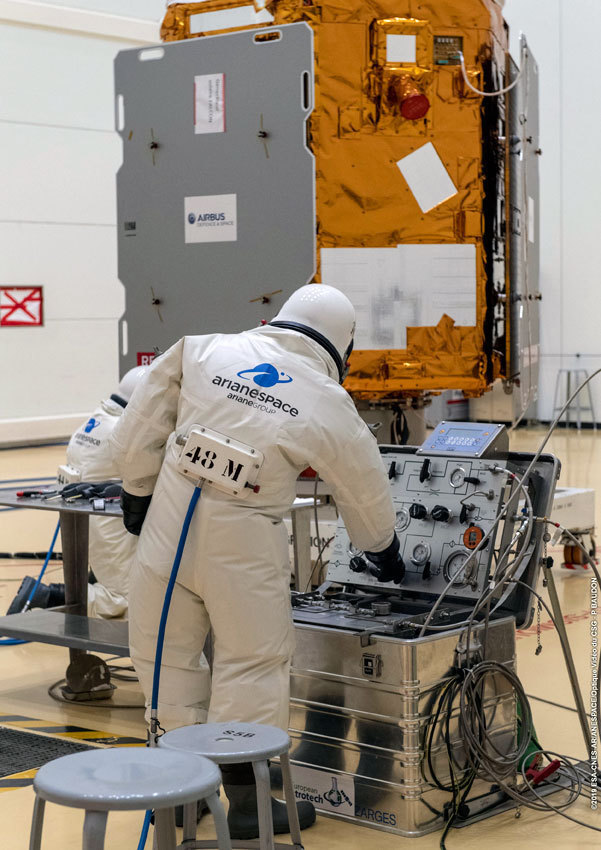
FalconEye1 is “topped off” at the Spaceport in French Guiana, clearing the way for its integration on Vega.
FalconEye1 – developed by Airbus Defence and Space as prime contractor and Thales Alenia Space as co-prime – is now advancing through the pre-flight checkout process, having received its propellant load during activity at the Spaceport.
The satellite will weigh approximately 1,197 kg. at launch and will be raised to a helio-synchronous orbit at 611 kilometers following its deployment by Vega.
FalconEye1 is the first in a pair of spacecraft that will make up the United Arab Emirates’ FalconEye satellite system, which is to serve two primary purposes: supporting the needs of this country’s armed forces and supplying the commercial market with imagery. The second FalconEye spacecraft – FalconEye2 – will be launched later in 2019 on a separate Arianespace Vega mission.
The upcoming mission is designated Flight VV15, signifying the 15th launch of the lightweight Vega vehicle – which joins Arianespace’s medium-lift Soyuz and heavyweight Ariane 5 in side-by-side operations at the Spaceport in French Guiana, forming a comprehensive launch vehicle family.
Quelle: arianespace
----
Update: 8.07.2019
.
Why UAE’s satellite Falcon Eye 1 launch has been postponed again
Weather remained unfavorable to launch the Falcon Eye 1 on Monday
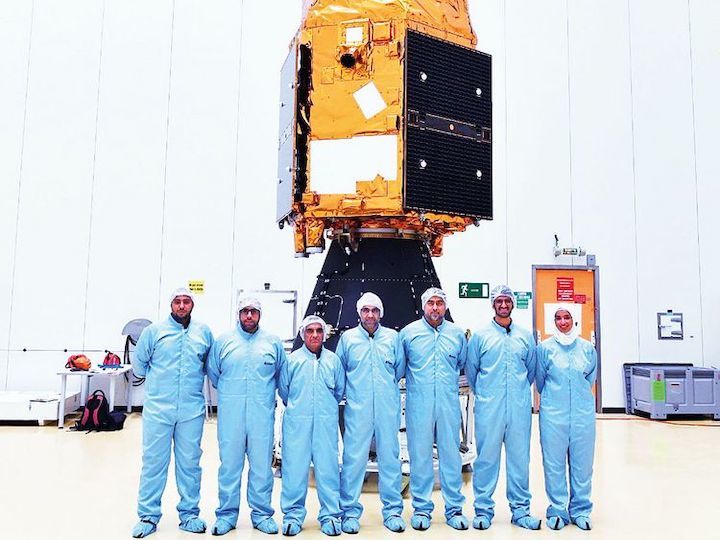
UAE scientists’ team with Falcon Eye 1 preparing for launch.Image Credit: WAM Dubai: The Monday launch of the UAE’s reconnaissance satellite ‘Falcon Eye 1’ has been pushed back once again due to high-altitude winds in French Guiana, Arianespace has announced.
The UAE’s fourth reconnaissance satellite was first set for its launch to space on Saturday at the Guiana Space Centre in French Guiana. But due to bad weather conditions, the launch was pushed back to Monday at 5.53am UAE time.
Weather conditions remained a challenge for the launch on Monday, however.
“As high-altitude winds above the Guiana Space Center remain unfavorable, Arianespace has taken the decision not to attempt a launch on Sunday, July 7, 2019 [Monday in UAE]. The new target date will be announced as soon as possible based on the evolution of weather conditions,” the spaceport said in a statement.
“The Vega launch vehicle and its Falcon Eye 1 spacecraft payload are in stable and safe conditions.”
Winds coming from the East-southeast blew at 4km/h with gusts of 11km/h on Sunday night in French Guiana, according to Accuweather.
Weather conditions are a huge consideration during satellite launches. Clear skies and calmer conditions are needed for successful launches. Temperature, precipitation, lightning and winds, among other factors are looked into hours and even minutes before launch.
Flight VV15 with its payload the Falcon Eye 1 satellite will be rescheduled as soon as favourable weather is seen.
The Falcon Eye 1 satellite is a high performance optical Earth-observation satellite system for the Armed Forces of the UAE (UAEAF) manufactured by Airbus Defence and Space as prime contractor and Thales Alenia Space as co-prime.
A second satellite, the Falcon Eye 2, is scheduled for launch this year. Both satellites are in Sun- synchronous orbit (SSO), meaning it will travel from pole to pole to take images as the Earth rotates.
Each satellite features an Earth observation payload, with very-high-resolution optical capabilities of 70cm resolution across 20km swathe. It is also equipped with a ground system for monitoring, receiving and processing the images.
Once in orbit at 611km above Earth, Emirati engineers will control and operate the 1,197kg-satellite.
Airbus Defence and Space was in charge of the satellite design, integration and tests, and supplied the platform.
Quelle: GULF NEWS
----
Update: 11.07.2019
.
Flight VV15: Mission failure
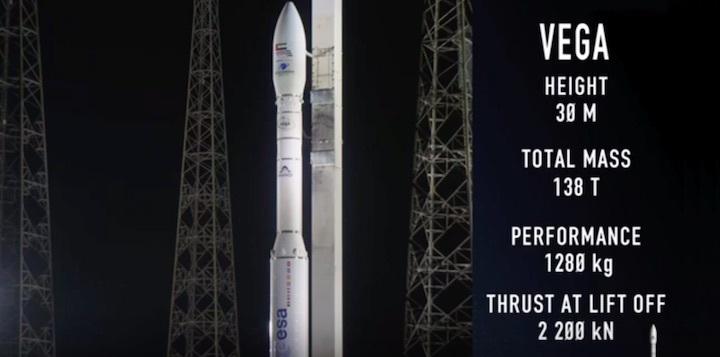
Approximately two minutes after the Vega launcher’s liftoff from the Spaceport in French Guiana, a launcher anomaly occurred shortly after ignition of the Zefiro 23 second stage – leading to the premature end of the mission.
Data analyses are in progress to clarify the reasons for this failure.
An independent inquiry commission will be set up in the coming hours.
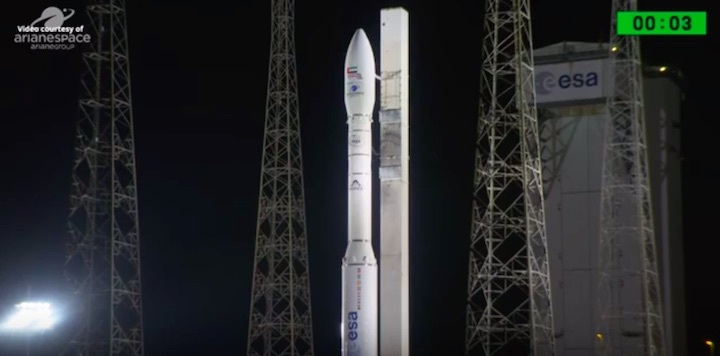
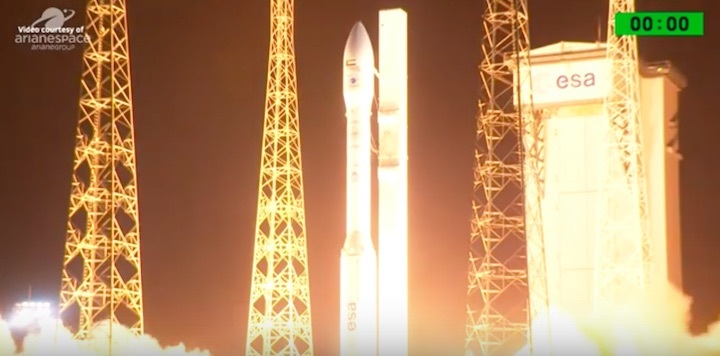

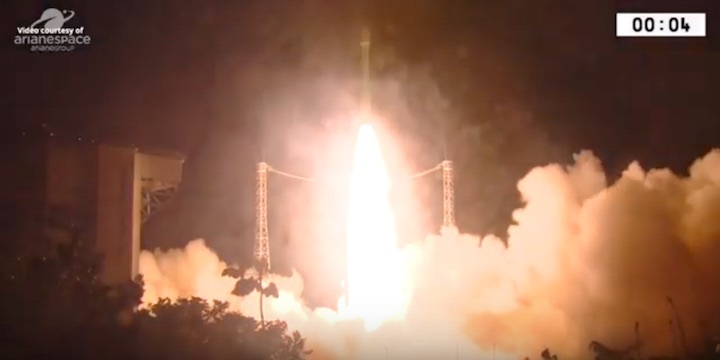
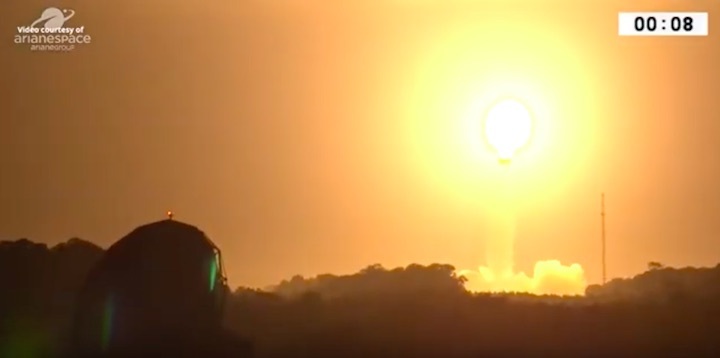
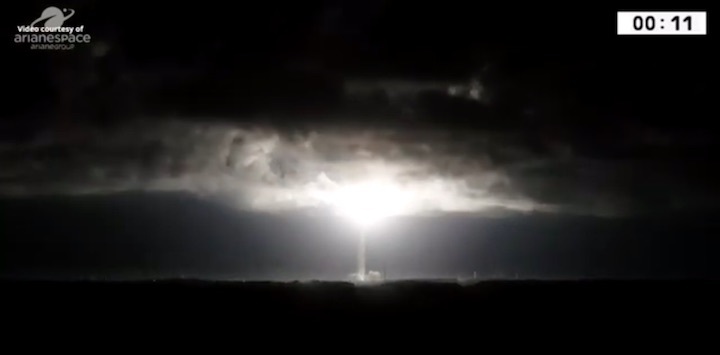
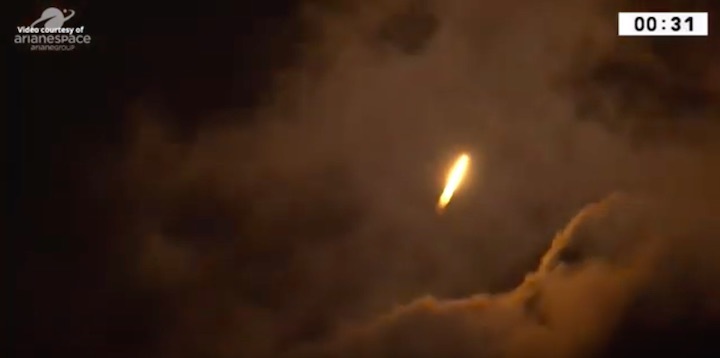
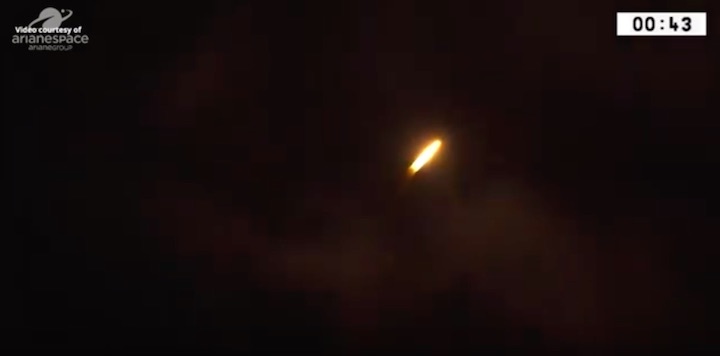
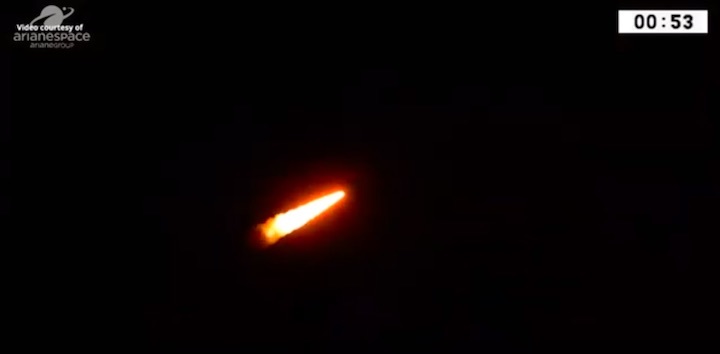
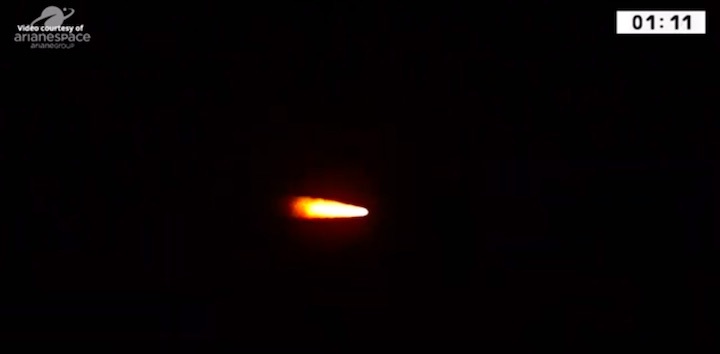
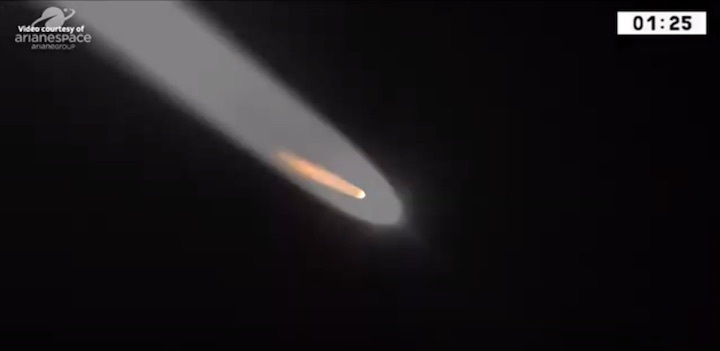


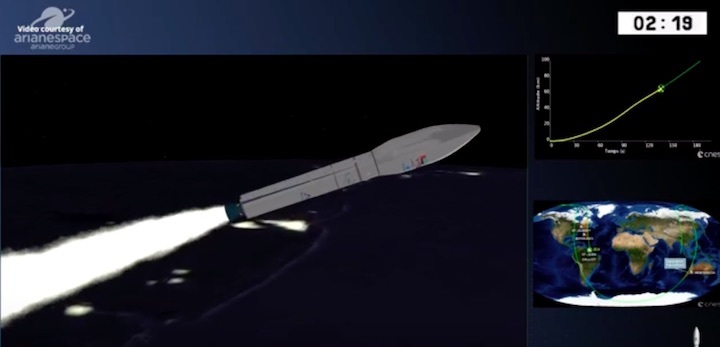
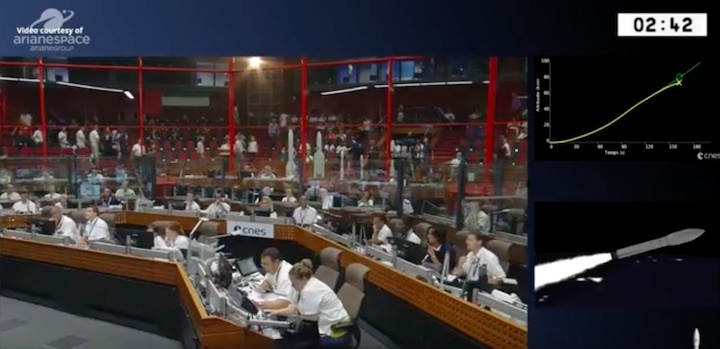

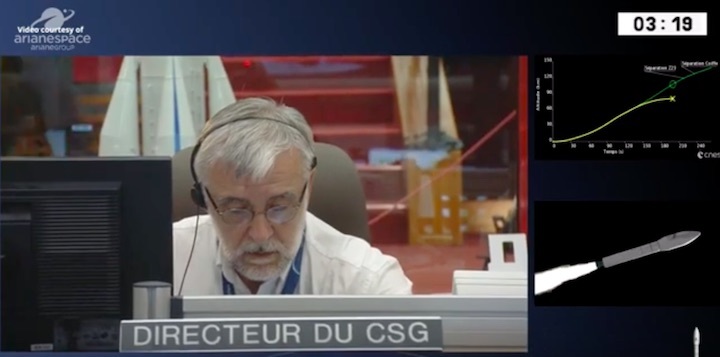
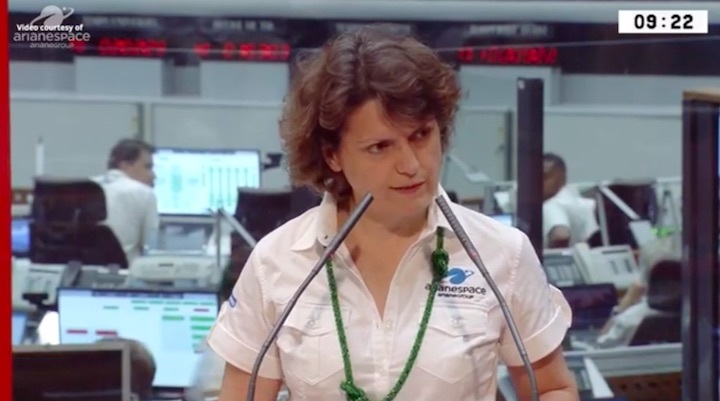
Quelle: arianespace
